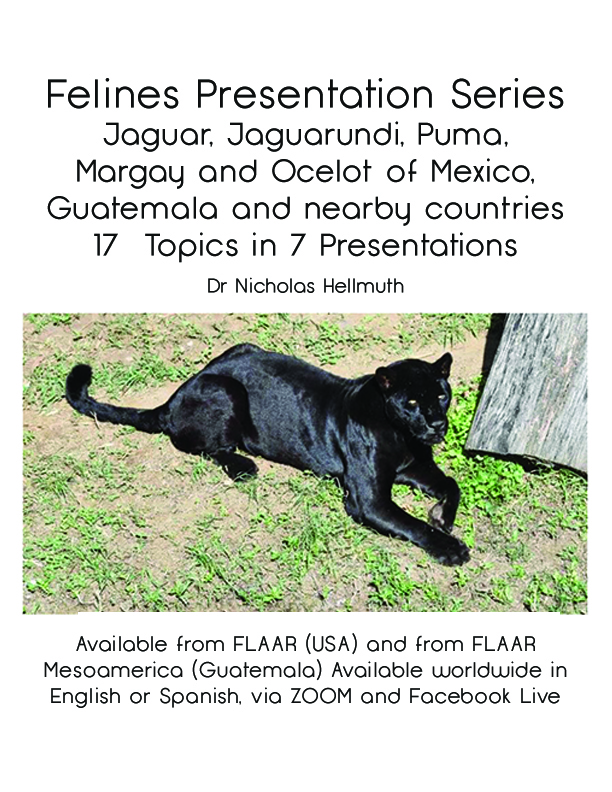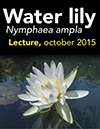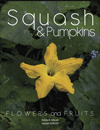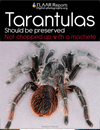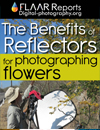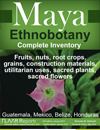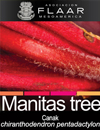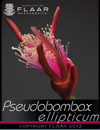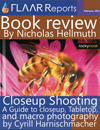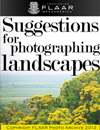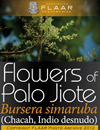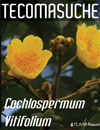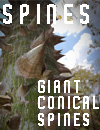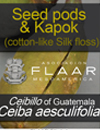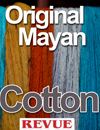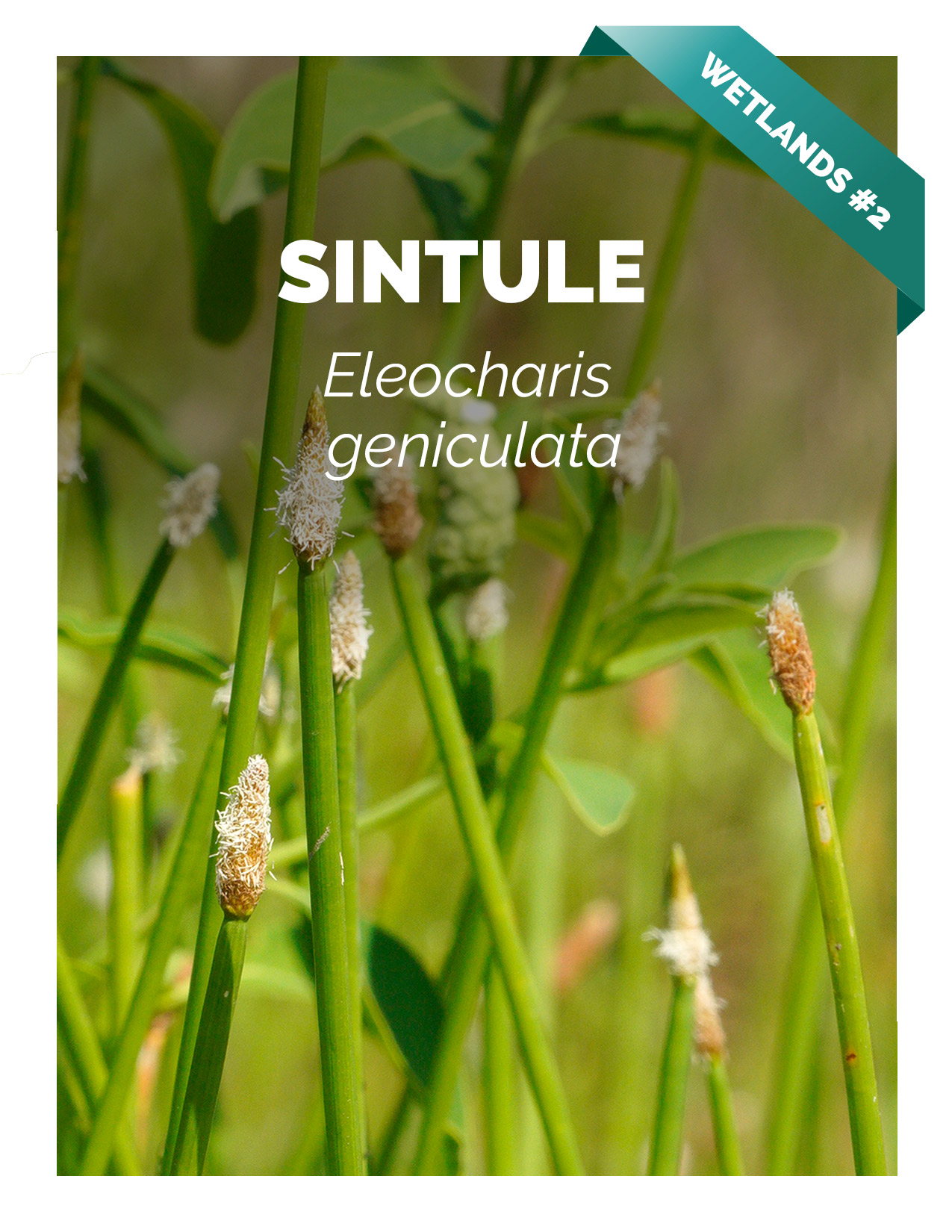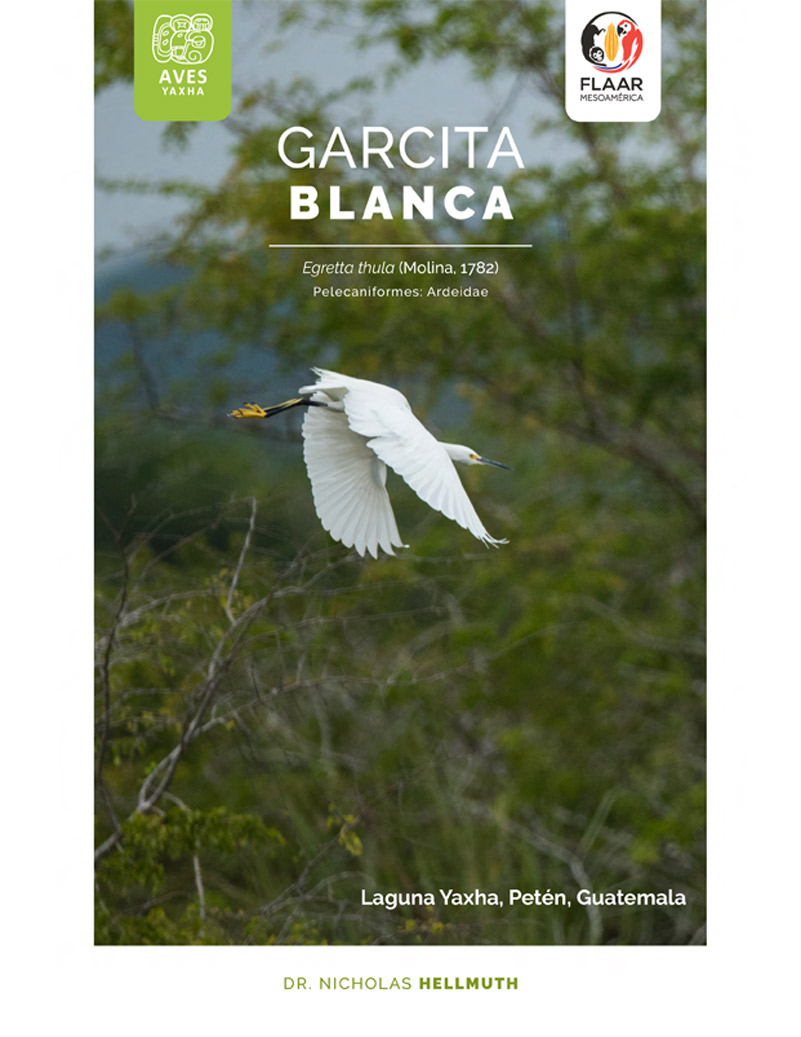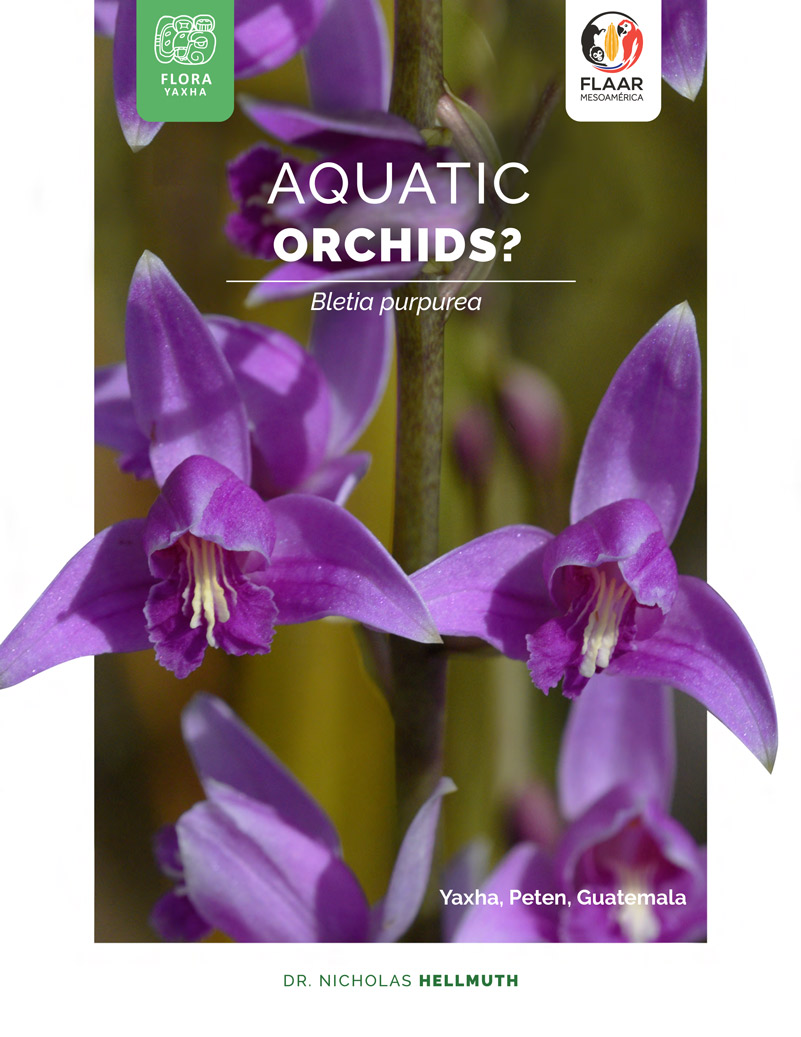Description of Pithecellobium Marth.
This genus its part of the Leguminosae family. The etymology of the names comes from two Greek words: pithecos (mono) and ellobiom (ring or ear). Pithecellobium has a twisted legume, and the seeds are enclosed inn a fleshy aril. It differs from other genus in one character: the seed funiculus modified into a spongy aril which covers a third or half of the seed and in the dehiscence phase, seeds are suspended by an aryliform funiculus that can be red, pink or white, attractive to birds and edible to humans. It is also characterized by the obligate or at least potential presence of lignified stipules (García, 2013).
There are 18 species inside this genus including medicinal plants like Pithecellobium dulce and others. P. dulce, native to the Pacific Coast and adjacent highlands of Mexico, Central America and Northern South America, is a small medium sized, evergreen, spiny tree that grows up to 18 m height and is the only species among this genus that has become widespread outside its origin (Srinivas et al., 2018).
Taxonomy:
| Class | Magnoliophyta |
| Order | Fabales |
| Family | Leguminosae (Fabaceae) |
| Tribe | Ingeae |
| Genus | Pithecellobium |
Uses of the Pithecellobium genus available to the Classic Maya
Trees of the Mayan world were a resource for food, medicine and wood for building both houses and tools and things for the kitchen. So it is useful to get to know the trees available to the Classic Maya. Most of the helpful studies of Maya forest gardens focus on hilltop and hillside forests. We are studying trees of the bajos in an area not previously visited by ecologists or botanists: the far far southeast part of Parque Nacional Laguna del Tigre (PNLT), of the Reserva de la Biosfera Maya (RBM), Peten, Guatemala.
Pithecellobium dulce is the most used plant of this genus. It has ethnomedicinal uses because the chemical composition of the species has basic biological active compounds. The leaves, barks, fruits, seeds and root are known to possess therapeutic functions and have been used by traditional practitioners (Srivinas et al., 2018). Its therapeutic and biological values can be seen in the estrogenic activity in the root extracts, the anti-inflammatory activity of the fruits and various parts have been reported to be as a remedy for earache, leprosy, toothache and venereal disease. This plant also has a useful remedy for dermatitis eye inflammation (Murugesan et al., 2019).
This species, known as “guamúchil” in Spanish and “Jungal jalebi” or “black bead tree” in English, is a multiple use species and its uses include production of wood, fruits, forage, medical substances, rubber and shade. It also helps to control erosion, improve water filtration through the root system, fix atmospheric nitrogen and serve as windbreaks and maintain fertility (Monroy and Colin, 2004).
Other species of this genus, Pithecellobium clypearia, is used as an herbal medicine in the treatment of respiratory tract diseases in southern China. There is a pharmaceutical product manufactured from the aqueous extract of the leaves and twigs of this species and is used to treat respiratory infections, pharyngitis, laryngitis, acute tonsillitis, acute gastroenteritis, and bacterial dysentery (Li et al., 2006). It is important to note that there’s still little information about the biological activities and phytochemical components of P. clypearia.
Finally, Pithecellobium jiringa is a species used as food, its used traditionally by the people in the South-East Asia region, mostly for its therapeutic value, such as purification of blood and overcoming dysentery. Its seeds have green colored cotyledon that is usually eaten raw or consumed as decoction in heated or non-heated water (Sridaran et al., 2012).
We find Pithecellobium trees primarily in the seasonally inundated bajo swamp forests
I see Pithecellobium trees almost every month, as I am hiking through seasonally inundated forests of the bajo swamp areas of Peten. I have found these trees very common in the far southeast area of Parque Nacional Laguna del Tigre (PNLT) where we have been doing lots of field work. These trees are easy to recognize due to the twin-spines on a horizontal space on the tree trunk. You don’t see tree trunks in herbaria drawers and not every botanical description mentions the trunk or root characteristics of a tree. In the future we will publish a FLAAR Report on these trees, to show their trunks.
These trees often grow in a cluster of two to four trunks rising from the same area. But you also see single individual trunks. We need to study this in more detail. Keep in mind we have to hike many kilometers through the undulating (up and down) surface of the bajo to reach our goal: a savanna many miles away. So, we don’t have time to take notes on every tree species that we see.
Lots of Mayan trees have multiple uses. I would be curious on how many studies of “Trees of the Maya” list Pithecellobium trees. We have a lot more library research and field work to accomplish, but in the meantime, our team has compiled a selected bibliography for you to learn more about the genus, its uses and studies related to it.
References Cited
- 2013
- Sistemática de Pithecellobium Mart. Sección Spicatae L. Rico y taxonomía de P. lanceolatum (Willd.) Benth. (Leguminosae). Maestria thesis. Centro de investigación Científica de Yucatán, A. C. 146 pages.
Available Online:
https://cicy.repositorioinstitucional.mx/jspui/bitstream/
1003/1003/1/PCB_M_Tesis_2013_Sergio_Garcia_Lara.pdf
- 2006
- Antiviral Flavans from the Leaves of Pithecellobium clypearia. Journal of Natural Products. Vol. 69, No. 5. Pages 833-835.
Available Online:
https://pubs.acs.org/doi/abs/10.1021/np050498o#
- 2004
- El guamúchil Pithecellobium dulce (Roxb.) Benth, un ejemplo de uso múltiple. Madera y Bosques, Vol. 10, No. 1. Pages 35-53.
Available Online:
www.redalyc.org/pdf/617/61710103.pdf
- 2019
- Nutritional and therapeutic benefits of medicinal plant Pithecellobium dulce (Fabaceae): A review. Journal of Applied Pharmaceutical Science, Vol. 9, No. 7. Pages 130-139. DOI: 10.7324/JAPS.2019.90718
Mentions nutritional values of the species including secondary metabolites.
Available Online:
LINK
- 2004
- El guamúchil Pithecellobium dulce (Roxb.) Benth, un ejemplo de uso múltiple. Madera y Bosques, Vol. 10, No. 1. Pages 35-53.
Available Online:
https://www.redalyc.org/pdf/617/61710103.pdf
- 2019
- Nutritional and therapeutic benefits of medicinal plant Pithecellobium dulce (Fabaceae): A review. Journal of Applied Pharmaceutical Science, Vol. 9, No. 7. Pages 130-139. DOI: 10.7324/JAPS.2019.90718
Mentions nutritional values of the species including secondary metabolites.
Available Online:
https://japsonline.com/admin/php/uploads/2953_pdf.pdf
- 2012
- Pithecellobium jiringa legume flour for potential food applications: Studies on their physicochemical and functional properties. Food Chemistry, Vol. 130, No. 3. Pages 528-535.
Available Online:
https://www.sciencedirect.com/science/article/abs/pii/S0308814611010235
- 1990
- A review on Pithecellobium dulce: A potential medicinal tree. International Journal of Chemical Studies, Vol. 6, No. 2. Pages 540-544. In page #3 there is an extensive list that explains the medicinal uses of different parts of the Pithecellobium dulce plant.
Available Online:
www.researchgate.net/profile/Srinivas-Girijal/
publication/324417937_A_review_on_Pithecellobium_
dulce_A_potential_medicinal_tree/links/5accfe420f7e9b18
9654afc2/A-review-on-Pithecellobium-dulce-A-potential-medicinal-tree.pdf
Suggested Reading on Pithecellobium
- 2000
- n. d.
- Pithecellobium dulce. Description. CONABIO. 4 pages.
Available Online:
www.conabio.gob.mx/conocimiento/info_especies/
arboles/doctos/45-legum38m.pdf
- 2012
- Pithecellobium winzerlingii Britton & Rose (Leguminosae) y un breve comentario sobre el concepto de especie. Herbario CICY, Vol. 4, No. 6-8.
Available Online:
www.cicy.mx/Documentos/CICY/Desde_Herbario/2012/2012-01
-19-Duno-Pithecellobium-y-el-concepto-de-especie.pdf
- 2006
- Composición proximal, niveles de metabolitos secundarios y valor nutritivo del follaje de algunos árboles forrajeros tropicales. Archivo de Zootecnia, Vol. 55, No. 212. Pages: 373-384.
Available Online:
www.redalyc.org/pdf/495/49521205.pdf
- 2006
- Composición química factores antinutricionales potenciales y valor nutritivo de dos especies del género Pithecellobium. Pastos y Forrajes. Vol. 29, No. 2. 18 pages.
Available Online:
www.redalyc.org/pdf/2691/269121704006.pdf
- 2018
- Medicinal uses of Pithecellobium dulce and its health benefits. Journal of Pharmacognosy and Phytochemistry. 5 pages.
Available Online:
www.phytojournal.com/archives/2018/vol7issue2/PartJ/7-1-390-353.pdf
- 2015
- Análisis de variación morfológica de semillas y embriones de diez especies distribuidas en los bosques secos de la provincia de Manabí. Titulación thesis. Universidad Técnica Particular de Loja. 78 pages.
Available Online:
https://dspace.utpl.edu.ec/handle/123456789/12794
- 2020
- Amycolatopsis pithecelloba sp. nov., a novel actinomycete isolated from roots of Pithecellobium dulce in Thailand. The Journal of Antibiotics, Vol. 73. Pages 230-235.
Available Online:
www.nature.com/articles/s41429-019-0271-z#citeas
- 2012
- Antioxidant activity and free radical-scavenging potential of Pithecellobium dulce Benth seed extracts. Free Rad. Antiox. Vol. 2, No. 2. 7 pages.
Available Online:
www.sciencedirect.com/science/article/abs/pii/S2231253612220089
- n. d.
- Pithecellobium dulce. Guamúchil. 5 pages.
Available Online:
www.fs.usda.gov/treesearch/pubs/30375
- 2021
- Phytochemical Analysis of Three Common Medicinal Plants (Gliricidia sepium, Melothria pendula, and Pithecellobium dulce) in the Philippines. Scholars Academic Journal of Biosciences, Vol. 9, No. 3. Pages 84-88. DOI: 10.36347/sajb.2021.v09i03.004
Available Online:
www.researchgate.net/profile/Jinky-Marie-Chua/publication/350371232_
Phytochemical_Analysis_of_Three_Common_Medicinal_Plants_Gliricidia_
sepium_Melothria_pendula_and_Pithecellobium_dulce_in_the_Philippines/
links/605bef95458515e8346c78c8/Phytochemical-Analysis-of-Three-Common
-Medicinal-Plants-Gliricidia-sepium-Melothria-pendula-and-Pithecellobium-
dulce-in-the-Philippines.pdf
- 2012
- Respuesta a tratamientos preferminativos y caracterización morfológica de plántulas de Leucaena leucocephala, Pinthecellobium dulce y Ziziphus mauritiana / Response to pregerminative treatments and morphological characterization of seedlings of Leucaena leucocephala, Pinthecellobium dulce y Ziziphus mauritiana. Pastos y Forrajes, Vol. 35, No. 1. Pages 29-42.
Available Online:
http://scielo.sld.cu/pdf/pyf/v35n1/pyf03112.pdf
- 2021
- Traditional knowledge to clinical trials: a review on nutritional and therapeutic potential of Pithecellobium dulce. Journal of Basic and Clinical Physiology and Pharmacology, Vol. 0, No. 0. 10 pages.
Available Online:
www.degruyter.com/document/doi/10.1515
/jbcpp-2020-0166/html?lang=de
- 2019
- Pithecellobium dulce fruit extract mitigates cyclophosphamide-mediated toxicity by regulating proinflammatory cytokines. Journal of Food Biochemistry, Vol. 44. No. 1. 15 pages.
Available Online:
https://onlinelibrary.wiley.com/doi/abs/10.1111/jfbc.13083
- 2005
- El cariotipo de Pithecellobium dulce (Mimosoideae-Leguminosae). DARWINIANA, Vol. 43, No. 1-4. Pages 52-56.
Available Online:
www.scielo.org.ar/pdf/darwin/v43n1-4/v43n1-4a05.pdf
- 2001
- ¿Cómo utilizar los frutos de guanacaste (Enterolobium cyclocarpum), guácimo (Guazuma ulmifolia), genízaro (Pithecellobium saman) y jícaro (Crescentia alata) en alimentación animal? Agroforestería en las Américas, Vol. 8, No. 31. 5 pages.
Available Online:
https://repositorio.catie.ac.cr/handle/11554/6954
Suggested websites for Pithecellobium
https://florida.plantatlas.usf.edu/Genus.aspx?id=952
Identification key and distribution of Pithecellobium
www.itis.gov/servlet/SingleRpt/SingleRpt?search_topic=TSN&search_value=26870#null
Taxonomy of Pithecellobium
https://powo.science.kew.org/taxon/urn:lsid:ipni.org:names:331859-2
Description, distribution, uses and pictures of the genus
https://colombia.inaturalist.org/taxa/123476-Pithecellobium
Information, pictures and description of the genus
Bibliography and text by Maria Jose Toralla (FLAAR Mesoamerica).
Comments on habitat and spines by Nicholas Hellmuth
Photographs by Nicholas Hellmuth
First posted April 28, 2022.



